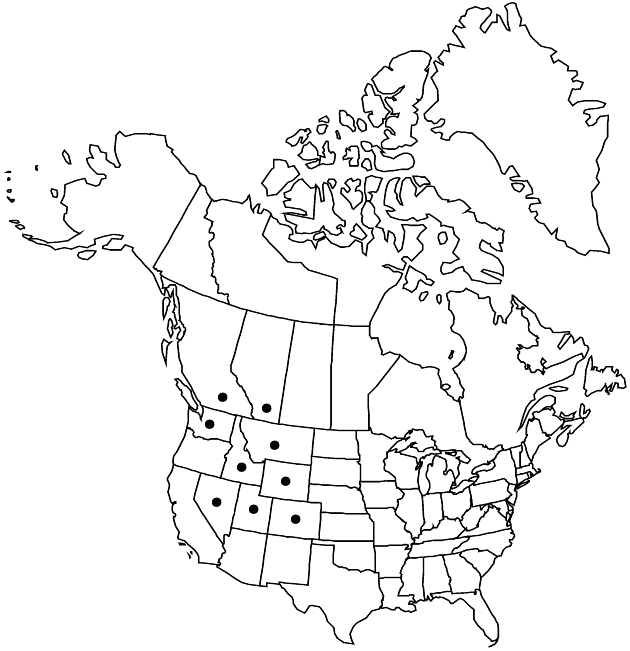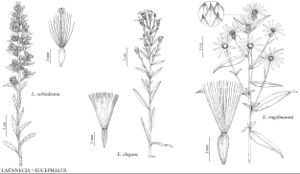Eucephalus engelmannii
Pittonia 3: 54. 1896.
Perennials 50–120 (–150) cm (with caudices or stout rhizomes). Stems ascending to erect, glabrate or pilose, eglandular to ± densely glandular. Leaves: mid and distal blades elliptic to lanceovate, 5–10 cm × 15–35 mm, faces glabrous and eglandular to adaxially villous and/or ± glandular. Heads 5–15 (–40) in racemiform to corymbiform arrays. Peduncles often stipitate-glandular. Involucres turbinate, 7–10 mm. Phyllaries in 4–6 series (strongly unequal, often reddish apically), linear to lanceovate, acute to acuminate, pubescent to glandular or glabrate abaxially, villous adaxially, especially distally (appearing ciliate toward tips). Rays usually 8 or 13, white to pink. Cypselae usually pilose; pappus bristles in 2 series, barbellate. 2n = 18.
Phenology: Flowering Jul–Aug.
Habitat: Open coniferous forests, montane and subalpine meadows
Elevation: 500–3000 m
Distribution

Alta., B.C., Colo., Idaho, Mont., Nev., Utah, Wash., Wyo.
Discussion
Forms of Eucephalus engelmannii from the Cascade Mountains with leaves more densely pubescent on the abaxial faces may reflect intergradation with E. ledophyllus.
Selected References
None.
